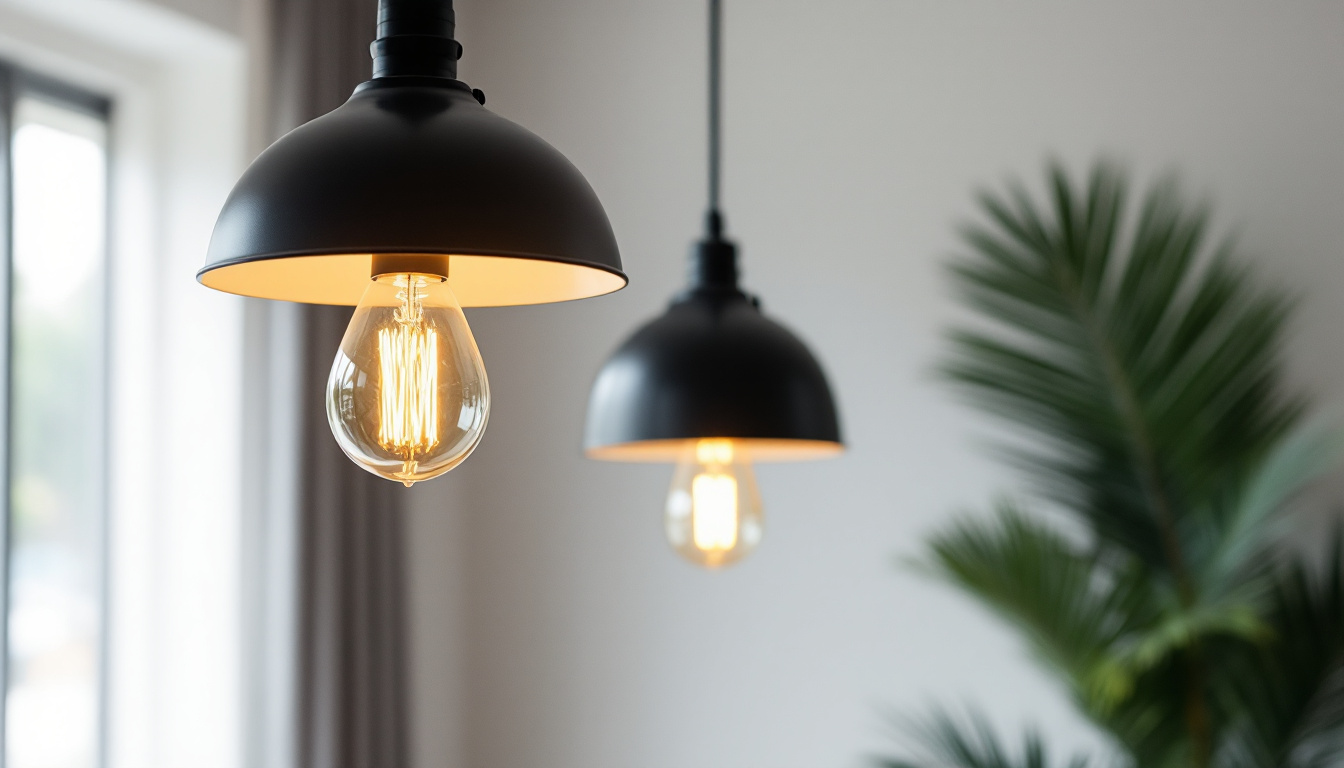
In the ever-evolving landscape of lighting technology, understanding the various types of bulbs and their impact on energy efficiency is crucial for lighting contractors. As energy costs rise and environmental concerns become more pressing, selecting the right lighting solutions can significantly affect both operational costs and sustainability efforts. This article delves into the different types of bulbs available in the market, their energy efficiency ratings, and the implications for contractors and their clients.
Lighting technology has advanced dramatically over the years, leading to the development of several types of bulbs, each with its unique characteristics and efficiencies. The most common types include incandescent, Compact Fluorescent Lamps (CFLs), light-emitting diodes (LEDs), and halogen bulbs. Each type offers varying levels of energy consumption, brightness, and lifespan, making it essential for contractors to understand their differences.
Incandescent bulbs have been a staple in lighting for decades. They produce light by heating a filament until it glows, which gives them a warm, inviting light quality. However, they are notoriously inefficient, converting only about 10% of the energy consumed into visible light, while the rest is lost as heat. This inefficiency translates to higher energy bills for consumers and a larger carbon footprint.
Despite their inefficiency, incandescent bulbs are still favored for certain applications due to their color rendering capabilities and affordability. Their warm glow is often preferred in residential settings, particularly in living rooms and dining areas where ambiance is key. However, as energy efficiency becomes a priority, many contractors are recommending alternatives that offer greater savings. The nostalgic appeal of incandescent lighting also plays a role in their continued popularity, as many consumers associate them with comfort and familiarity.
CFLs emerged as a popular alternative to incandescent bulbs, offering improved energy efficiency. They use a different mechanism to produce light, passing an electric current through a gas-filled tube, which then emits ultraviolet light that excites a phosphor coating inside the bulb, producing visible light. CFLs consume about 75% less energy than incandescent bulbs and have a significantly longer lifespan, often lasting up to 10,000 hours.
While CFLs offer substantial energy savings, they do have some drawbacks. They contain small amounts of mercury, which necessitates careful disposal, and they can take time to warm up to full brightness. Additionally, the light produced by CFLs can sometimes be perceived as harsh or unflattering compared to the warm glow of incandescent bulbs. Despite these issues, they remain a viable option for many lighting applications, particularly in areas where lights are left on for extended periods, such as hallways and offices. Their compact size also allows for versatile installation in fixtures that may not accommodate larger bulbs.
LED technology represents the pinnacle of energy efficiency in lighting. LEDs emit light through a semiconductor material, which allows them to convert a significant portion of energy into visible light, achieving efficiencies of up to 90%. This remarkable efficiency, combined with their long lifespan—often exceeding 25,000 hours—makes LEDs the preferred choice for both residential and commercial applications.
Moreover, LEDs come in various color temperatures and can be easily integrated into smart lighting systems, further enhancing their appeal. They can be dimmed without losing efficiency and are available in a range of colors, making them suitable for decorative lighting and mood settings. As a result, many contractors are increasingly recommending LED solutions to their clients, not only for their energy savings but also for their versatility and longevity. Furthermore, the decreasing cost of LED technology has made it more accessible, encouraging widespread adoption and innovation in lighting design. With advancements in technology, we can expect even more exciting developments in LED applications, such as tunable white lights that adjust color temperature based on the time of day, promoting better circadian rhythms and overall well-being.
When evaluating the energy efficiency of different bulbs, it is essential to consider the ratings and standards that govern their performance. Various organizations and regulatory bodies establish these guidelines to help consumers make informed choices. Understanding these ratings can empower contractors to provide better recommendations to their clients.
The Energy Star program, established by the Environmental Protection Agency (EPA), identifies products that meet strict energy efficiency criteria. Bulbs that earn the Energy Star label are tested for performance and efficiency, ensuring they consume less energy while providing the same or better lighting quality compared to standard options.
For contractors, recommending Energy Star-certified products not only helps clients save on energy costs but also aligns with sustainability goals. Furthermore, many utility companies offer rebates for the installation of Energy Star products, making them an attractive option for budget-conscious consumers.
The Lighting Facts label provides consumers with essential information about a bulb’s performance, including its brightness (measured in lumens), energy consumption (watts), and estimated yearly energy cost. By understanding this label, contractors can guide clients in selecting bulbs that meet their specific lighting needs while maximizing energy efficiency.
For example, a bulb with a higher lumen output for a lower wattage indicates better efficiency. This information can help contractors recommend the most suitable lighting solutions for various applications, from residential settings to commercial spaces.
Choosing energy-efficient lighting solutions has significant financial implications for both consumers and contractors. While the upfront costs of energy-efficient bulbs, particularly LEDs, may be higher than traditional incandescent options, the long-term savings can be substantial.
One of the most compelling arguments for transitioning to energy-efficient lighting is the potential for cost savings. Energy-efficient bulbs consume less power, leading to lower electricity bills. For instance, switching from incandescent to LED bulbs can reduce energy consumption by up to 80%, resulting in significant savings over time.
Additionally, the longer lifespan of energy-efficient bulbs means reduced replacement costs. Contractors who emphasize these savings can help clients understand the value of investing in higher-quality lighting solutions, ultimately leading to greater customer satisfaction and loyalty.
Many utility companies and government programs offer incentives and rebates for the installation of energy-efficient lighting. These programs can significantly offset the initial costs of purchasing and installing energy-efficient bulbs. Contractors should stay informed about available incentives in their area to provide clients with the best possible options.
By leveraging these incentives, contractors can present a compelling case for energy-efficient lighting, making it more accessible and appealing to clients who may be hesitant due to upfront costs.
Beyond the financial implications, the environmental benefits of energy-efficient lighting cannot be overlooked. As concerns about climate change and resource depletion grow, the role of lighting in energy consumption becomes increasingly critical.
Energy-efficient bulbs contribute to a significant reduction in greenhouse gas emissions. By consuming less energy, they decrease the demand for electricity generated from fossil fuels, which are a major source of carbon emissions. Contractors who advocate for energy-efficient lighting play a vital role in promoting sustainability and reducing the overall carbon footprint of their clients.
Moreover, the widespread adoption of energy-efficient lighting can lead to a collective impact on energy consumption, further mitigating climate change effects. This aspect resonates with environmentally conscious clients, making it an essential consideration for contractors.
In addition to reducing energy consumption, energy-efficient bulbs also contribute to waste reduction. Traditional incandescent bulbs have a shorter lifespan and are more likely to end up in landfills. In contrast, LEDs and CFLs last significantly longer, resulting in fewer bulbs being disposed of over time.
Contractors can educate clients about proper disposal methods for CFLs, which contain mercury, and encourage recycling programs for old bulbs. By promoting responsible disposal practices, contractors can further enhance their commitment to sustainability.
The lighting industry is continuously evolving, with new technologies and innovations emerging regularly. Staying abreast of these trends is essential for contractors looking to provide the best solutions for their clients.
Smart lighting technology is gaining traction, allowing users to control their lighting systems remotely through smartphones or voice-activated devices. This technology not only enhances convenience but also promotes energy efficiency by enabling users to schedule lighting based on their needs, reducing energy waste.
Contractors who embrace smart lighting solutions can offer clients a modern, user-friendly experience while maximizing energy savings. As smart home technology continues to advance, integrating lighting systems with other smart devices will become increasingly common.
LED technology is also advancing rapidly, with improvements in color rendering, brightness, and efficiency. New developments, such as tunable white LEDs and color-changing capabilities, allow for greater customization in lighting design. Contractors should keep an eye on these advancements to provide clients with cutting-edge solutions that meet their specific needs.
As the industry moves toward more sustainable practices, the integration of renewable energy sources, such as solar-powered lighting, is also gaining popularity. Contractors who are knowledgeable about these options can position themselves as leaders in the field, attracting clients who prioritize sustainability.
Understanding the various types of bulbs and their impact on energy efficiency is crucial for lighting contractors. By educating clients about the benefits of energy-efficient lighting solutions, contractors can help them make informed decisions that lead to significant cost savings and environmental benefits.
As the industry continues to evolve, staying informed about new technologies and trends will enable contractors to remain competitive and provide exceptional service. Embracing energy-efficient lighting not only enhances the bottom line for contractors but also contributes to a more sustainable future for all.
Ready to elevate your lighting game and pass on the savings and sustainability to your clients? Look no further than LumenWholesale for a comprehensive range of energy-efficient lighting solutions. Our spec-grade products not only meet the highest industry standards but come at unbeatable wholesale prices, ensuring you get the best value for every project. Say goodbye to local distributor markups and hello to premium lighting with the convenience of free shipping. Make the smart choice for your business and the environment. Discover our selection and start transforming spaces with confidence. Visit Wholesale Lighting at the Best Value today and light up your projects with quality and affordability.

Discover the ultimate guide to selecting the best high bay lights and effectively training your team in lighting solutions.

Discover essential tips and insights for lighting contractors on effectively utilizing Uvo Light technology.

Discover the truth about fluorescent bulbs and their heat emissions, and learn how lighting contractors can leverage this knowledge to enhance their projects.

Discover why light pendants are a crucial element for lighting contractors in transforming spaces.